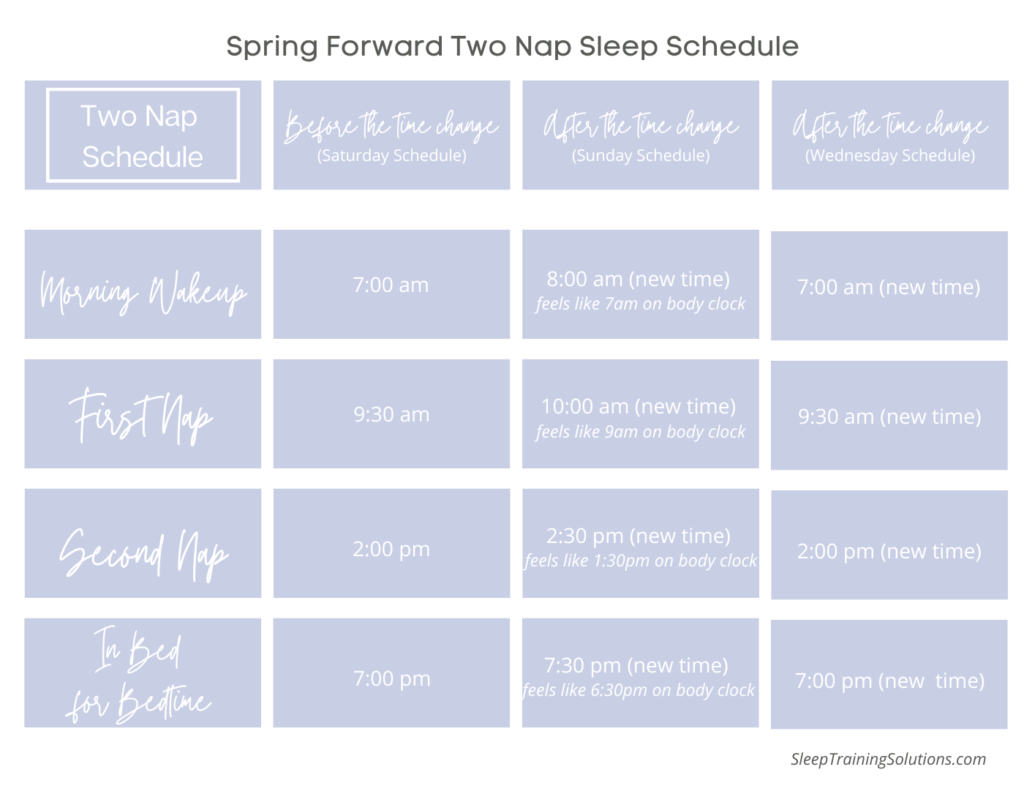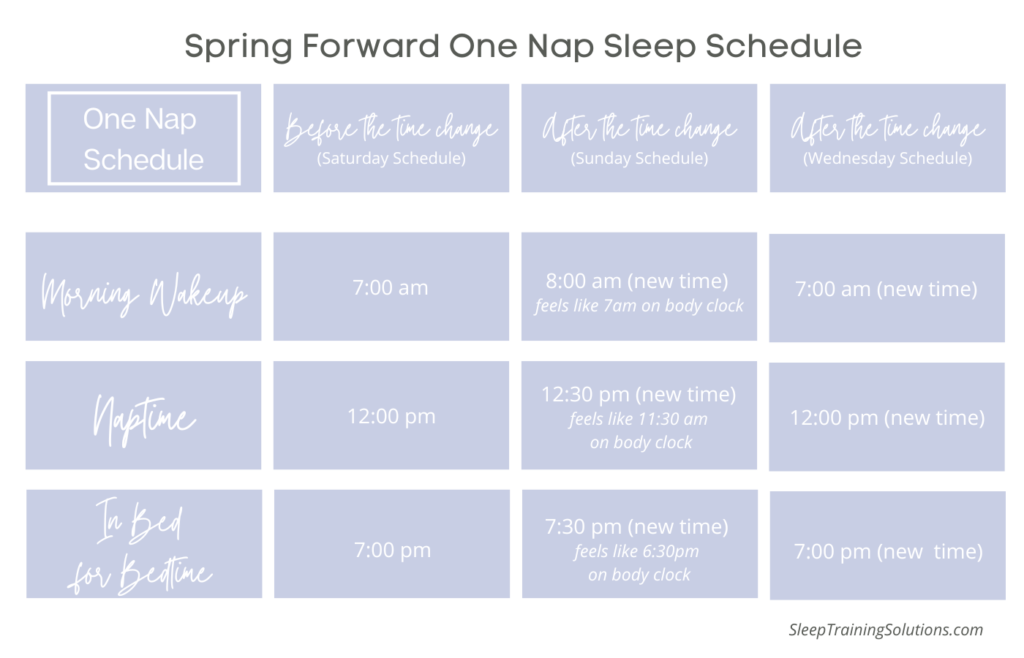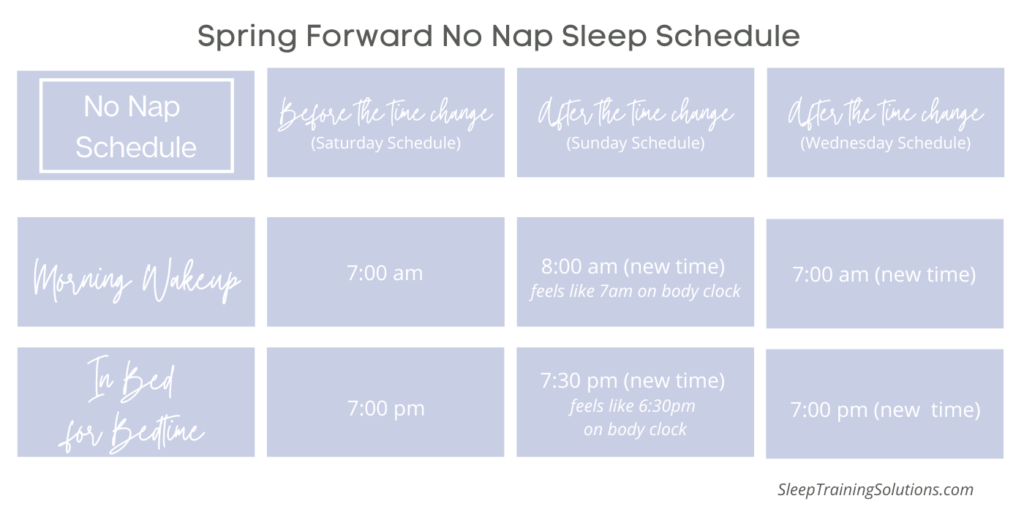How to Spring Forward - Sleep Schedules for Daylight Savings Time
Spring Daylight Savings Tips for Child Sleep
Are you ready to Spring Forward? Clocks change this Sunday at 2am! Thankfully the time change this weekend is a much easier transition on children’s sleep than the time change in the Fall. AND if you have been struggling with early morning wakeups, this will help!
There are three options for this time change:
Adapt to the new time and have a later wakeup and later bedtime
Adjust sleep schedules the week after the time change to keep wakeup and bedtime at the same times as pre-DST
Gradually adjust schedules leading up to the time change
Over the years I’ve found that Option #1 and #2 are easiest for most people. Option #3 is a bit more complicated with more steps and parents with young kids just want the simplest plan! So I’ll focus on #1 and #2 here which means you don’t have to pre-plan or do anything before the time change!
Option 1: Adapt to a shifted later schedule
For the Spring time change, some families decide not to adjust to Daylight Savings Time so they can enjoy the longer daylight hours with sports, picnics and other outside activities.
This option works best for younger children who do not need to be up at a certain time for school or daycare AND if bedtime (lights out) is currently (prior to the time change) 7:15/7:30PM or earlier.
In this scenario, you would ignore the time change Sunday morning and let your child wake up at the “normal” time which is actually one hour later according to “new time” on the clock. So if you had a 7am wakeup and 7pm bedtime prior to the time change, you’d now have a 8am wakeup and 8pm bedtime after the time change.
Option 2: Adjust the sleep schedule after the time change
If the current wakeup and bedtime times are working for your child and you don’t anticipate wanting to move bedtime later during the summer, then starting on Sunday, you can tweak times based on your child’s age.
For babies taking 3+ naps, you’ll want to continue putting them down according to their awake time windows since they aren’t on set nap schedules yet:
Newborns (0-3 months) – 60-75 minutes
4 month olds – 1.5-1.75 hours
5 month olds – 2-2.5 hours
So that means that on Sunday, if you want to keep the general schedule in place that you had pre-time change, you either need to wake baby up early from one of the naps or lean into to a later bedtime!
For babies on two naps or fewer, you’ll shift times by 30 minutes for 3 days and then shift again by 30 minutes. After about a week, your child should be adjusted to the “new time”.
Here are some sample schedules:
Thinking about starting sleep training? Download your free PDF to help set you up for success!
The most important thing you can do after Daylight Savings for your child’s sleep
As your child adjusts to Daylight Savings Time, make sure you have great blackout shades on the bedroom windows. As we get into the summer, where it’ll be light at bedtime and light before their wakeup time, it’s so important to have a 100% pitch black sleeping environment!
Here are two options: quick paper shades and more sturdy blackout shades.
Just remember that it takes children about a week to adjust to the adjusted schedule after Daylight Savings Time!
Daylight Savings Time Spring toddler sleep tips
Related Posts:
This post is for informational purposes only and may not be the best fit for you, your child and/or your personal situation. It shall not be construed as medical advice. The information and education provided here is not intended or implied to supplement or replace professional medical treatment, advice, and/or diagnosis. Always check with your child’s physician or medical professional before trying or implementing any information read here.









